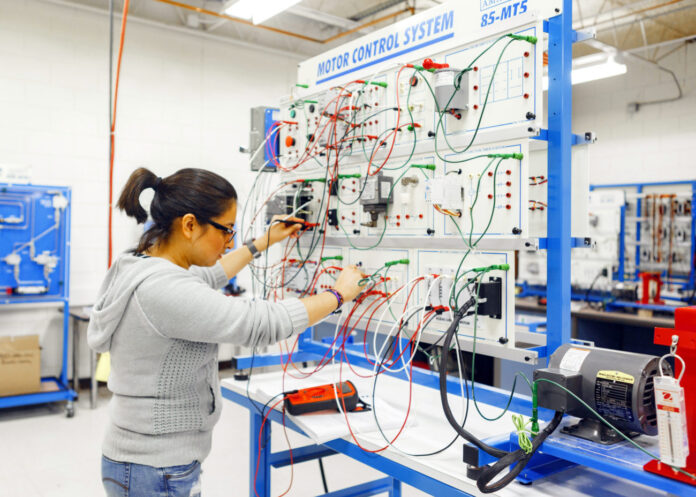By Amanda Sotelo, TSTC Staff
Mechatronics Technology has to do with robotics and the combined learning of mechanical and electronic skills. The study brings together several disciplines such as electronics, mechanics, robotics, instrumentation and computer control systems.
Texas State Technical College Mechatronics Technology instructor Eldwin Leija said with the changing landscape of technology, the demand for technicians in this industry is increasing steadily.
And with Texas being among the largest employers in this field, TSTC works diligently to train its students with the skills needed to meet the demand and fill a skills gap.
Leija explains that with advances in technology that are changing the way the job is done, TSTC is also evolving its program to include the most up-to-date equipment and training.
What is the length of the program?
The program is five semesters or 20 months long.
What can a student expect when they graduate?
Students can earn an associate degree and from a program with a 95 percent placement rate, can gain employment in an array of industrial fields.
What skills do you learn in Mechatronics Technology?
A student in the program will learn everything from electronics and electrical motors to mechanical systems and, new to the program, Smart Manufacturing also known as Industry 4.0.
Smart Manufacturing focuses on the set up and maintenance of communication protocols that are created for mechanical and industrial software programs and applications used on smart devices such as phones, tablets and watches.
What types of technology are used to learn these skills?
The program consists of 30 percent lecture and 70 percent hands-on training on industry-standard equipment such as programmable logic controllers, variable frequency drives, hydraulic and pneumatic machinery, industrial robots and manufacturing center simulators.
How do these skills prepare a student for the workforce?
Because students train on industry-standard equipment and machinery and are taught by faculty with experience in the field, they are given the foundation they need to be job-ready.
Graduates, many who are recruited by companies before they even graduate because of their well-rounded skills, will enter the workforce familiar with the industrial lingo, processes and software.
What kind of positions can a graduate from this program obtain?
Graduates from this program have gone on to work as mechanical engineering technicians, electrical engineering technicians, field service technicians and electronic engineering technicians for companies such as Toyota, H-E-B, Mary Kay, American Electric Power (AEP), Oncor, Chevron, Schlumberger and National Oilwell Varco.
And according to O*Net OnLine, the median wage for a graduate from this program is $56,000 a year, with opportunity for growth.




